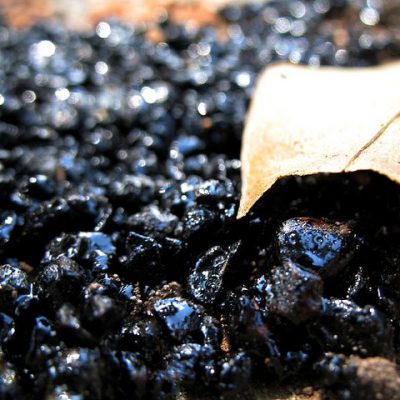- Home
- Bitumen
Bitumen


What is Bitumen?
Crude oil distillation produces bitumen. It is a semi-solid hydrocarbon product created during the refining process by taking the lighter fractions (such liquid petroleum gas, gasoline, and diesel) out of heavy crude oil. As a result, it is properly referred to as refined bitumen.
“asphalt” or “asphalt cement”
Bitumen is frequently referred to as “asphalt cement” or “asphalt” in North America. In some places, a mixture of small stones, sand, filler, and bitumen known as “asphalt” is used as a paving medium for roads. About 5% of the bitumen in the asphalt mixture is bitumen. Bitumen is a stable, semi-solid material at room temperature.
Background of Bitumen
L.A. Tar Pits
As early as the third millennium BCE, the Sumerians employed it for the construction of statues, brick walls, the mortaring of baths and drains, stair treads, and ships. Other cultures such as Babylon, India, Persia, Egypt, and ancient Greece and Rome continued these uses, and in several cases the bitumen has continued to hold components securely together to this day. In some versions of the Book of Genesis in the Bible, the name of the substance used to bind the bricks of the Tower of Babel is translated as bitumen. Although its existence has not been confirmed, a one-kilometer tunnel beneath the river Euphrates at Babylon in the time of Queen Semiramis (ca. 700 B.C.) was reportedly constructed of burnt bricks covered with bitumen as a waterproofing agent. The term bitumen comes from Latin. The Greek name for the substance was ?σφαλτoς (asphaltos). Approximately 40 A.D. Dioscorides described production of asphaltos (as distinguished from piss asphalt and naphtha): (1655 Goodyear translation). The terms asphalt and bitumen are often used interchangeably to mean both natural and manufactured forms of the substance.
“The Judaicum Bitumen is better than others; that is reckoned the best, which doth shine like purple, being of a strong scent & weighty, but the black and fowle is naught for it is adulterated with Pitch mixed with it. It grows in Phoenice also, and in Sidon, & in Babylon, & in Zacynthum. It is found also moist swimming upon wells in the countries of the Argentines of Sicily, which they use for lamps instead of oyle, and which they call falsely Sicilian oyle, for it is a kind of most Bitumen.
The Judaicum Bitumen is a famous deposit of native asphalt seeping through diapirs at the bottom of the Dead Sea, which comes occasionally to the surface through seismic activity in blocks of up to 100 tons in weight which are more than 99.99% pure. It was the object of the first known battle for a hydrocarbon deposit, between the Seleucids and the Nabateans in 312 B.C.
Geological origin of Bitumen
La Brea Tar Pits
Naturally occurring deposits of bitumen are formed from the remains of ancient, microscopic algae and other once-living things. When these organisms died, their remains were deposited in the mud on the bottom of the ocean or lake where they lived. Under the heat and pressure of burial deep in the earth, the remains were transformed into materials such as bitumen, kerogen, or petroleum. Deposits at the La Brea Tar Pits are an example.
There are structural similarities between bitumen and the organic matter in carbonaceous meteorites. However, detailed studies have shown these materials to be distinct.
Given that analogous matter is found in certain meteorites and bitumen are also found in Archean rocks it is possible that some bitumen are primordial material formed during accretion of the Earth and reworked by bacteria that consume hydrocarbons.
